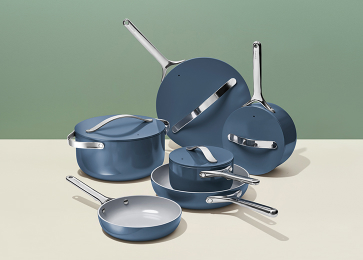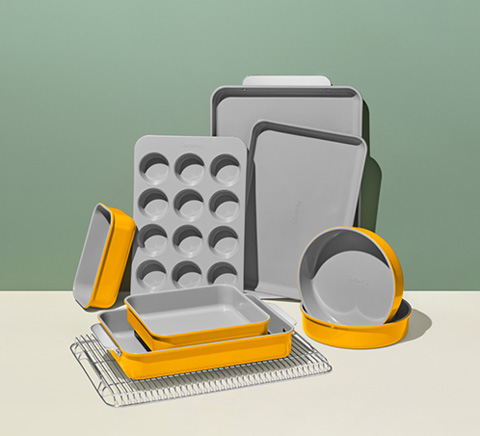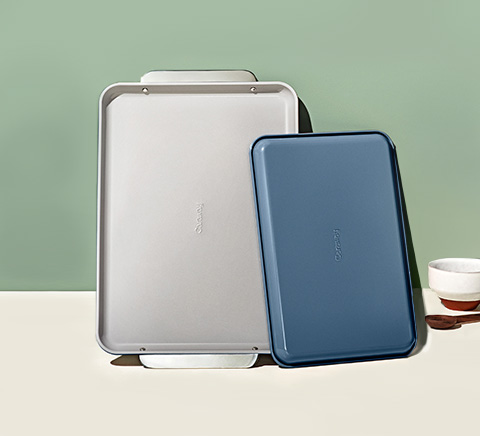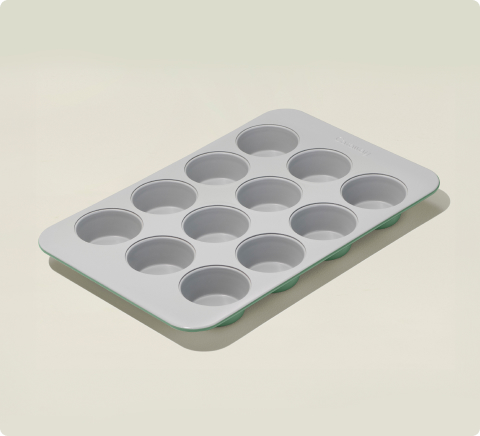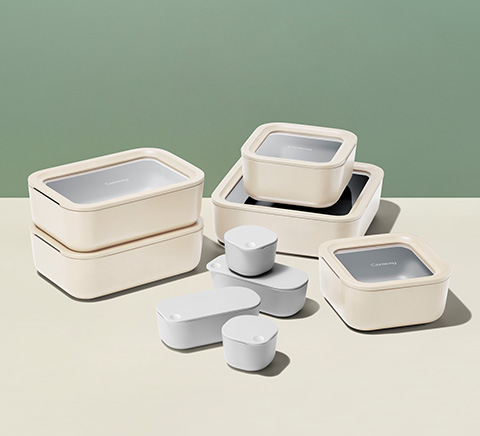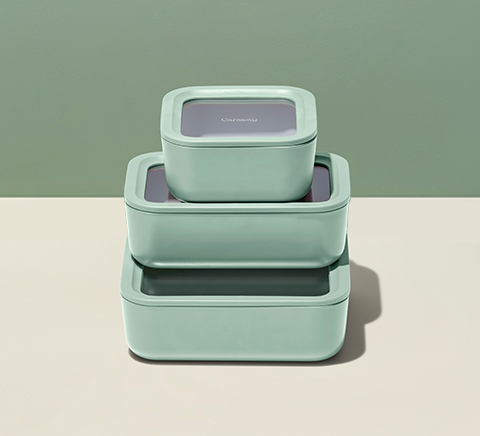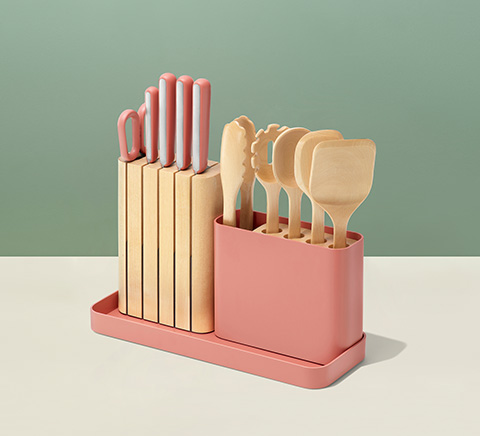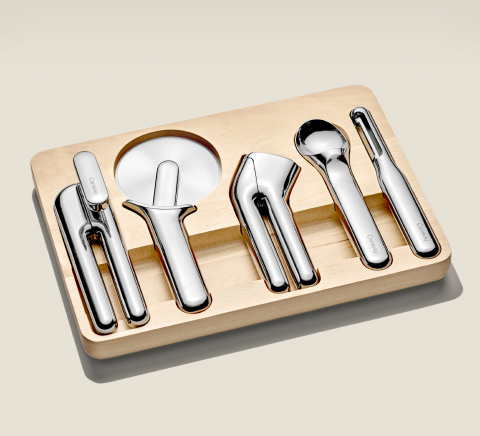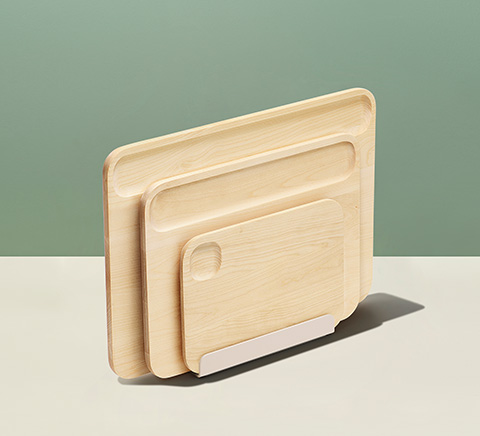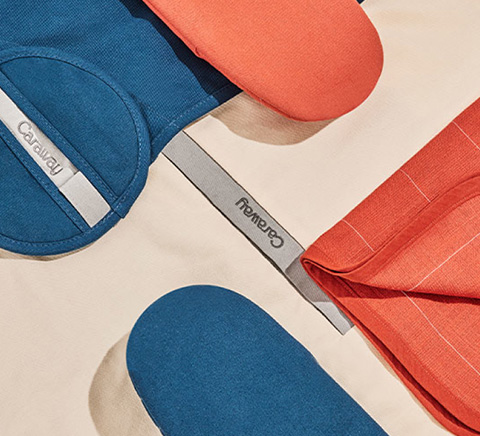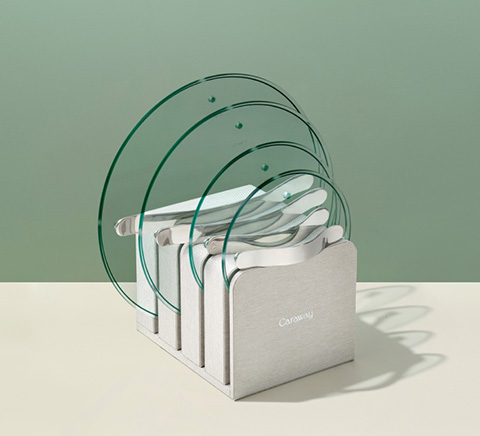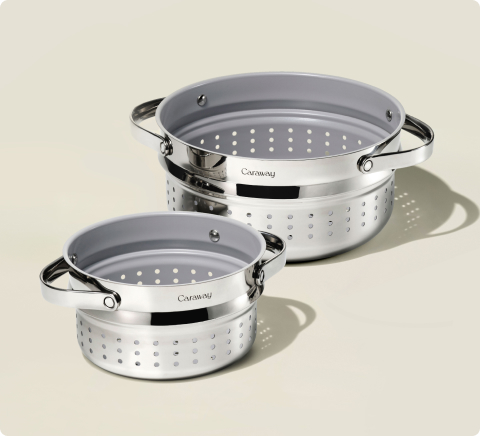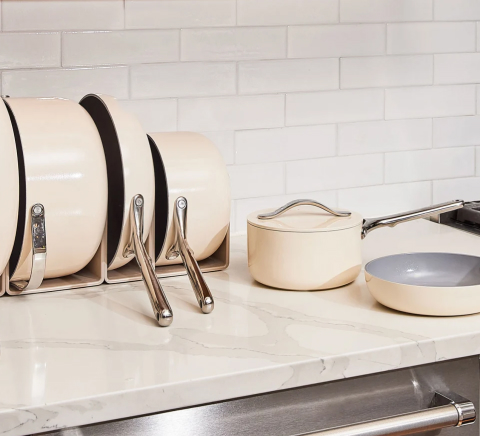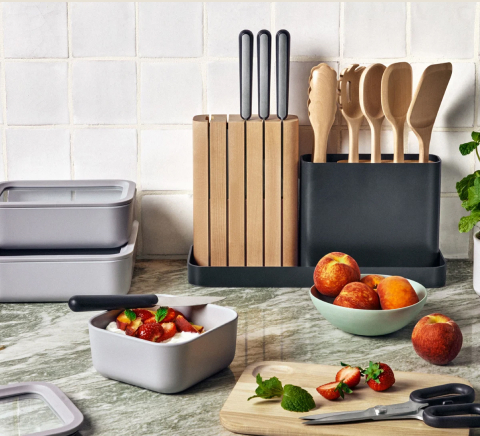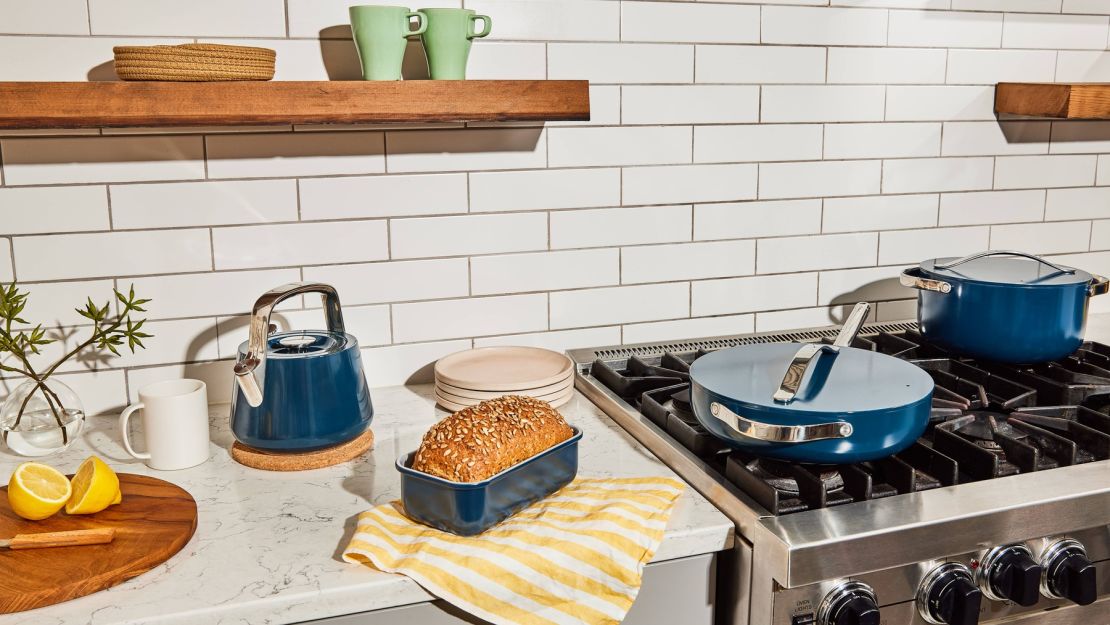Whether you’re an avid cook, a newcomer in the kitchen, an interior designer, or somewhere in between, you’re probably familiar with the various types of cookware out there. One that seems to be gaining quite a bit of attention is ceramic cookware—a personal favorite of ours.
In the hunt for the perfect kitchen, ceramic cookware should definitely be one of the first items you turn to. It has gained popularity in recent years, offering a stylish and non-toxic alternative to traditional non-stick pans. Loved for its good looks and safety, ceramic cookware has a lot to offer.
However, like any kitchen tool, it comes with its own set of pros and cons. In this post, we'll dive into the advantages and disadvantages of ceramic cookware, helping you decide if it deserves a spot in your kitchen.
What Is Ceramic Cookware?
Everyone's kitchen is unique. You may have chosen a white subway tile for your backsplash, while your neighbor chose a moody slate shade. Maybe you went back and forth on the countertop material, favoring white quartz over a dark green granite.
When designing the center of your home (the kitchen), it seems like there is an endless array of options. When purchasing cookware, you also have quite a few options from a wide range of materials.
These cookware materials include, but are not limited to, stainless steel, cast iron, ceramic, and more.
Let's talk about ceramic. Ceramics are everywhere in our life: from collectible figurines to spark plugs in race cars. Most notably, ceramics can be made into healthy cookware.
Non-stick cookware is a common fixture in any kitchen.
However, some cookware comes by their non-stick properties through the use of dangerous chemicals like polytetrafluoroethylene (PTFE) and per-and polyfluoroalkyl substances (PFAS). These chemicals, like Teflon, can be toxic.
Not only is ceramic cookware free of toxins, but it also makes cooking and cleaning easier than ever before.
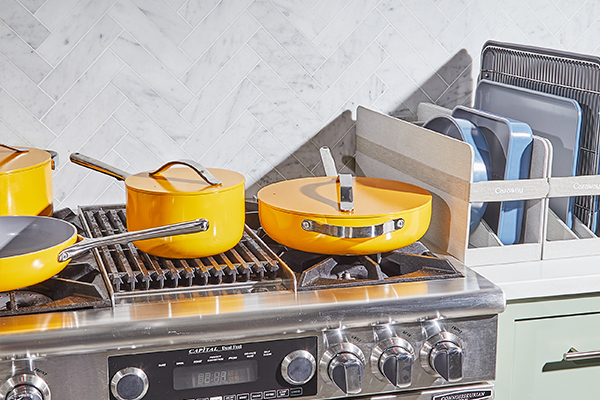
The Pros of Ceramic Cookware
Non-Reactive Surface
One of the standout features of ceramic cookware is its non-reactive surface. This means it doesn't interact with acidic foods like tomatoes, citrus, or vinegar, allowing your dishes to retain their true flavors without any unwanted metallic taste. This makes ceramic an excellent choice for a variety of recipes, especially those involving acidic ingredients.
Non-Stick Quality
Ceramic cookware comes with the wonderful non-stick surface that we all know and love. However, our cookware truly sets it apart from traditional non-stick options out there.
All of the items in our Cookware Set come with a completely natural ceramic coating that provides a slick, non-stick surface for you to cook on. This contrasts with traditional non-stick cookware that achieves their non-stick status through a coating filled with toxic chemicals.
So, what does all that mean? Basically, you'll be getting the wonderful benefits of non-stick cookware without the harmful chemicals and potential health risks that come with it. Plus, our ceramic cookware works so well that it can also last significantly longer than traditional non-stick cookware, with proper care.
Even Heat Distribution
Ceramic-coated cookware is known for its ability to distribute heat evenly, preventing hot spots and ensuring consistent cooking. Whether you're simmering a sauce, sautéing vegetables, or frying fish, ceramic cookware ensures even cooking throughout.
Easy To Clean
Cleaning ceramic pots and pans is usually nice and simple. Most pieces just require a simple wipe-down with soap and a sponge. The non-stick surface ensures that food residue doesn't cling to the pan, making post-cooking cleanup quick and easy, which is a major plus for busy cooks.
Attractive Appearance
Caraway's ceramic-coated pans come in a variety of colors and designs, adding a touch of aesthetic appeal to your kitchen. Whether you prefer a sleek, modern look or a more traditional style, there's a ceramic option to match your taste. Plus, their attractive appearance means they can double as serving dishes, going straight from the stove to the table.
Versatile Cooking
Pure ceramic cookware can be used on quite a few different cooking surfaces, including gas, electric, and induction cooktops. This versatility makes it a practical choice for many kitchens. Some ceramic cookware is even oven-safe, allowing for a seamless transition from stovetop to oven --- perfect for recipes that require both cooking methods.
Minimal Metal Leaching
Unlike stainless steel pans, which can release harmful chemicals and metals like nickel and chromium into food, ceramic cookware typically doesn't leach metals. This makes it a safer option for those concerned about metal contamination in their diet. The non-toxic nature of ceramic cookware is a significant advantage for health-conscious home cooks.
Healthy Cooking
With products free of toxic chemicals and metals, you're already on your way to a healthier lifestyle. But this goes beyond just the materials used in the cookware and the lack of harmful chemicals.
The slick surface of the ceramic coating is significantly more efficient than traditional non-stick cookware. With the latter, you can't always trust the surface completely. Even with the non-stick title, food still can find a way to get stuck on to the cookware.
The non-stick surface of ceramic cookware also allows for healthier cooking with less oil or fat compared to stainless steel or cast iron. This is particularly beneficial for those looking to reduce their fat intake without sacrificing flavor or cooking performance.
Health-conscious cooks can enjoy the benefits of non-stick cooking without the potential health risks associated with traditional non-stick cookware.
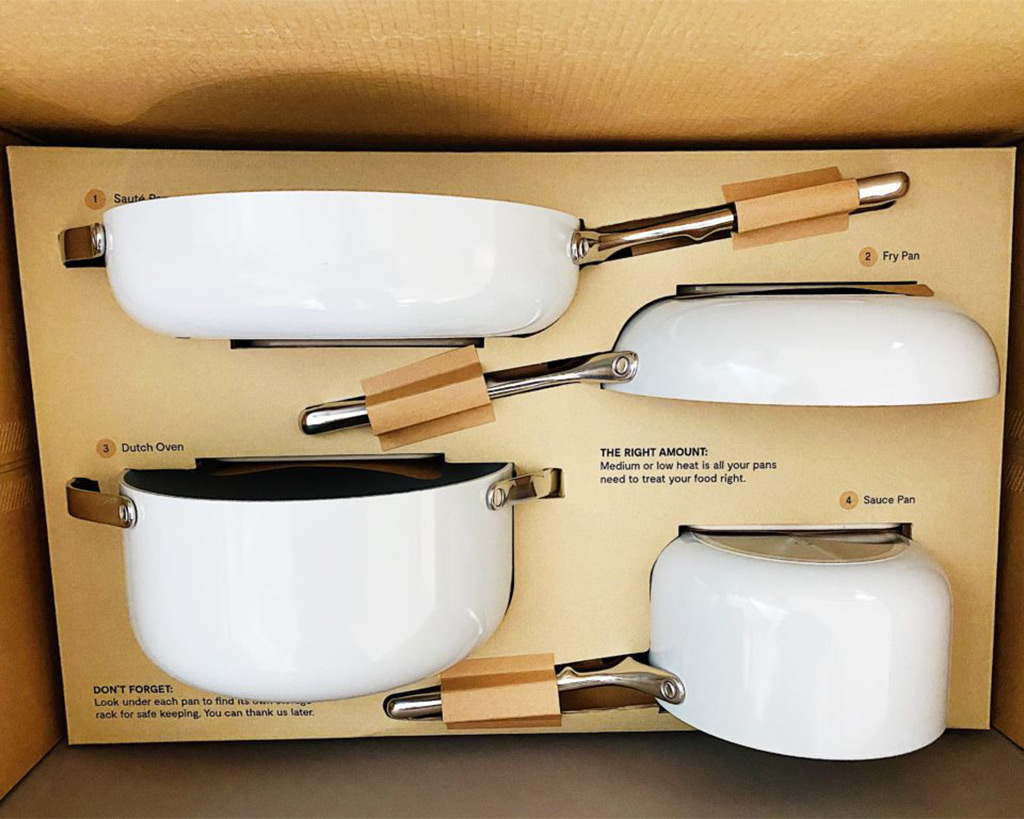
The Cons of Ceramic Cookware
Fragility
Ceramic cookware is more prone to chipping and cracking than cast iron or stainless steel cookware. While it can last a long time with proper care, it's not as durable as some other materials. Dropping ceramic nonstick cookware or exposing it to sudden temperature changes can cause damage, which may shorten its lifespan.
Never Use Metal Utensils
With delicate construction comes the need for extra care. For example, a beautiful silk scarf will need to be dry-cleaned and can't just be tossed in the washing machine. If you have granite or marble countertops, you may need to have these countertops resealed to keep them looking fresh.
It's no secret that ceramic is strong, but there are certain ways to keep the quality maintained. Other types of non-stick cookware, such as ones made of stainless steel, cast iron, and PTFE-based surfaces, can handle being tossed around and used roughly.
Not so much with ceramics: It's critical to never use metal cooking utensils with ceramic cookware, as they may cause the topcoat finish to chip.
Not Always Dishwasher Safe
It's important to remember to never put your ceramic cookware in the dishwasher. In fact, there are a whole host of items that are not dishwasher safe. Similarly to cast iron and all other types of non-stick cookware, ceramic should be hand-washed.
Luckily, ceramic is pretty easy to wash. Just run a little warm water over your pan, add in a dash of dish soap, and with a gentle scrub, the food will fall right off.
Limited Heat Tolerance
Some ceramic cookware may not be ideal for high-heat cooking methods like searing or broiling. Exposing ceramic to very high temperatures can damage the non-stick surface and cause it to break down. This limitation means that ceramic cookware may not be the best choice for anything higher than medium heat.
Potential for Discoloration
One of the downsides of using a ceramic non-stick pan or Dutch oven is the possibility of the color changing. Over time, even high-quality ceramic cookware may develop stains or discoloration, especially if not cleaned promptly.
Foods with vibrant colors, like tomato sauce or curry, can leave marks that are difficult to remove. While these stains don't affect the performance of the cookware, they can detract from its good looks.
Not Metal Utensil Safe
Using metal utensils on ceramic cookware can scratch or damage the non-stick surface. It's best to use wooden, silicone, or plastic utensils to avoid harming the cookware. This limitation means you may need to invest in a new cookware set or utensil if you don't already have non-metal options.
Requires Gentle Handling
Ceramic cookware requires a bit more gentle handling compared to more robust options like cast iron or stainless steel. While the non-stick surface makes cooking and cleaning easier, it also means that you need to be careful to avoid scratching or damaging it. This extra care might be seen as a drawback.
Caraway to the Rescue
Ceramics have been around a lot longer than our modern kitchens. Over time, ceramics have changed and grown with us and become an integral part of life essentials, here in our kitchens and even in outer space.
Every item in our Cookware Set is extremely versatile. We've whittled down all those items that you could need into four kitchen essentials: a Sauté Pan, a Sauce Pan, a Fry Pan, and a Dutch Oven---everything you need and nothing you don't.
These few products can tackle a multitude of different cooking tasks and are also incredibly easy to clean. You're probably no stranger to the dreadful scraping of dishes at the end of the day.
Not only is it a pain, this overuse of elbow grease damages the non-stick surface. With ceramic cookware, just a bit of soap, water, and gentle scrubbing, food falls off quickly and easily: no hassle at all.
Kitchens have the capacity to get a little crowded; not only does the whole family congregate there, but the pots, pans, and cooking supplies you need certainly take up space. That's where our minimalist style comes in through our Cookware Set's free storage unit. The Magnetic Pan Rack and Canvas Lid Holder ensures easy and convenient storage, so you never have to worry about a cluttered space.
As an added bonus, our cookware comes in a variety of vibrant colors that you won't find anywhere else. You spent so much time designing the perfect kitchen; your cookware should elevate your design choices.
With beautiful options such as Cream, Navy, Sage, Perracotta, and Gray, Marigold, you can create a beautiful and intentional style and look for your kitchen that is sure to have people turning heads.
Conclusion
Ceramic cookware offers a unique blend of non-toxic, non-stick cooking with an attractive appearance, making it a valuable addition to any kitchen. While it does require some extra care and attention, the benefits often outweigh the drawbacks.
Its ability to cook food evenly, retain original flavors, and promote healthier cooking makes it a popular choice among health-conscious and style-savvy cooks alike. Ultimately, the decision comes down to personal preference and cooking style.
If you value aesthetically pleasing, easy-to-clean, and health-conscious cookware, ceramic could be a perfect fit. Caraway's ceramic-coated cookware gives you incredible quality, unmatched style, and a variety of options for the best cooking experience you've ever had.
.
Sources:
Using and Caring for Nonstick Pans | The Spruce
What to Know About Marble Countertops | House Beautiful
21 things you should never put in the dishwasher | Today
Healthy Cooking Oils | American Heart Association
Authorized Uses of PFAS in Food Contact Applications | FDA
Stainless Steel Leaches Nickel and Chromium into Foods During Cooking | PMC
